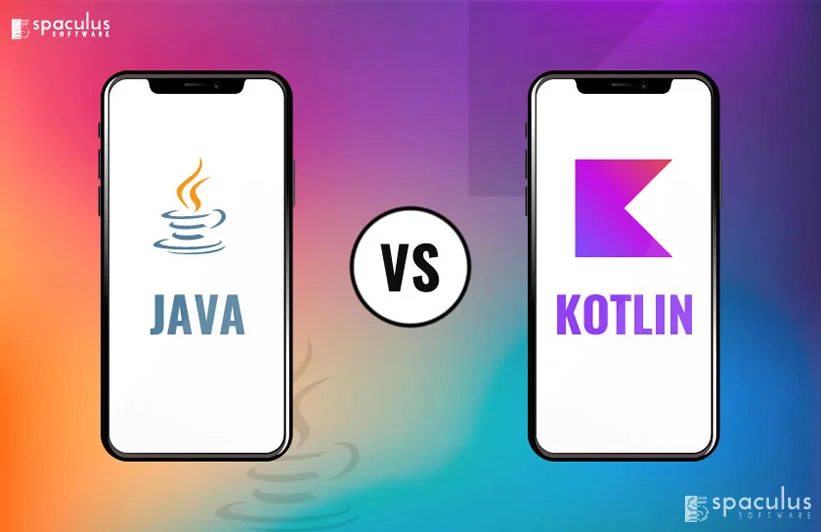Java vs. Kotlin: What Is Superior For Android App Development?

At Google’s last I/O conference, Kotlin received a great response and cheerful admiration from Android developers and rose as a compelling new programming language for Android app development. Reputed as a second official Android language, Kotlin has created a massive appeal among developers, gradually building up its global community.
However, Java still wears the crown of being the oldest legacy programming language in the evergreen domain of Android app development. Though Java isn’t now the only alternative with the arrival of Kotlin, Android developers still prefer to leverage Java to write android apps majorly due to limited confidence for Kotlin.
So the question that puts Java and Kotlin in a face-off battle is: Which among the two is superior and more developer-friendly, and what would you choose? In this blog post, we are about to discuss the pros and cons of both, trying to find the most accurate answer to this question.
What exactly is Kotlin?
It is not too long ago that JetBrains have launched this concise-structured, general-purpose programming language officially called Kotlin. It runs compatibly on JVM (Java Virtual Machine) and is designed to make writing Android application and efficient, smooth and economical process.
Apart from acting as a reliable versatile alternative, Kotlin’s chief purpose revolves around the idea of offering developers ease of coding, agility and productivity they need while developing Android applications. Kotlin mainly promises:
- Clarity
- Concision & code economy
- Versatility
- Productivity
- Interoperability
Kotlin out-dazzles us with its undeniable ability to improve coding experience for developers and win over Java’s subtle weaknesses.
Kotlin’s attractive features
Kotlin stands for its distinctive potential to enhance overall productivity of android app developers in a clean and effective way, which is evident from its top features described below:
- Combines both Object oriented and functional programming
- Support for both OO and FP forms
- Improved syntax and concise abstractions
- Powers mixed-language application development
- Support for high-order functions and types
- Compatibility with Java and Objective C
- Usability for Android, web and server development
Due to its natural compatibility with Java and Objective C, Kotlin enables developers to work on projects with mixed languages.
Where does Java stand at present?
Undoubtedly, Java is a tough competition and is likely to be considered as the most preferred official language for Android development. However, it is arguably true that both Kotlin and Java present themselves as development-friendly languages at present.
Those who believe that, with the rise of Kotlin, Java will be tarnished and will be treated as less valuable are wrong. Java is nowhere near getting phased out at the moment.
With the launch of Java 9, you can expect more innovative elements and more benefits in Java for programming the code.
Salient advantages of Kotlin over Java
Although developers are fond of and most familiar with Java, Kotlin features help developers beat certain drawbacks of using Java and power your Android app development. Here are certain advantages offered by Kotlin that may encourage you to consider switching to Kotlin:
Brevity of code writing
Kotlin offers succinctness in coding unlike Java. With Java Developers need to write bigger forms of code for the same function while Kotlin programs it in half or less lines of code. Java code snippets appear to be relatively long-winded for the same function or output, leading to the chances of encountering more bugs and consuming more time.
But you can rely on Kotlin to achieve the same function results in less effort as compared to Java. Kotlin takes the major burden off your shoulder by eliminating redundancy of lines and syntax. Due to concise nature of Kotlin language, the job of developers becomes less complicated with no room for error.
Kotlin’s succinct code offers the following benefits:
- Better code economy for writing the same functions
- Reduced incidents of bug finding
- Minimum efforts and enhanced productivity
- Thin syntax and lines
- More power to developers
- Intact clarity and cleanliness of code lines
- Concise boilerplate code
Thus, Kotlin ensures Android app developers feel effortless produce more in the same amount of time spent especially on writing the large-scale, overwhelming apps.
Interoperability
In Kotlin, you can simply write modules that impeccably fit into existing Java code. Emitting Bytecode is something you need to enable Kotlin compiler to process two languages seamlessly in the same project. This quality is called interoperability with which you can incorporate Kotlin in a small part of your current project.
The interoperability means that Kotlin and Java Classes can co-exist with utmost poise without having to convert the entire project code into Kotlin.
If you desire to keep Kotlin as a primary language, you can have two options:
- Either migrate the entire Java code to Kotlin OR
- Leave the Java code unchanged and craft new Class and features with Kotlin
This flexibility to opt for mixed-language approach defines interoperability for Kotlin to an extent.
Inbuilt Null Safety
The NullPointerException is notoriously present in Android and Java development leading to annoying mistakes for developers. Android has ‘null’ to represent the absence of value, but it is also accountable for making the app dysfunctional. Kotlin on the other hand has a type system with inherent null safety. Due to this provision, developers don’t need to write extra code to resolve the issue.
Impressive Learning Curve
With Kotlin, developers don’t need to typically worry about the time it will consume before they are quite familiar and thorough with the language. Kotlin enables developers to learn coding at fast pace. You can dedicate just a few hours understanding the language and get started with it. Kotlin has easy learning curve because:
- It feels like the extension of Java enabling developers to invest their Java skills
- The language facilitates lean, unstudied and clear syntax
- Kotlin and Java classes work side-by-side in the same project
- It is quite easy-to-read and fast-to-interpret
Android Studio Support
Android Studio will provide sufficient support for Kotlin developers. To gain support benefits, developers need to install Kotlin plugin. After the plugin is installed, Kotlin will be configured in your current project in a few quick steps and then developers can easily understand and run the code.Android studio helps Kotlin developers in:
- Auto complete
- Unit Testing
- Debugging
- Code navigation
- Refactoring
With incredible support from Android Studio, one can rapidly convert the existing Java source file into Kotlin code.
No Checked Exceptions
Java developers are often annoyed by the checked exception that unnecessarily shows empty catch blocks. It gives developers the hint of non-existent exception which is misinformation occurring during coding. Kotlin has eliminated Checked Exceptions completely in order to control the code density and boost type safety and productivity for Android app developers.
No problem of raw types
Kotlin further polished the old language with eliminating the problem of raw types. Raw types were often used to establish backwards compatibility. But during execution it also caused the error of CastClassException. Kotlin has forbidden ray types to resolve this issue and improve coding efficiency of developers.
Kotlin’s insupportable side
No programming language is perfect. Kotlin has insupportable side as well despite being increasingly popular such as:
The issue of Runtime Size
Kotlin has Standard library and runtime, which means its .apk file size may require additional 800KB in storage space. This may be unfavourable from users’ perspective as users don’t tend to download mobile apps having larger size.
Issues of code readability
Though Kotlin is wonderful in shortening code syntax, the strength of brevity may create lack of readability for users who are new. Since the code is concise, there is a lot to be interpreted from the small Kotlin version of coding.
Java, despite being verbose, has everything clearly explained in its code syntax, which makes it easier to get even the unfamiliar Java code.
Limited help of community
Kotlin users can look to Android Studio though Google does not provide official support. Since the language is new, Kotlin community is still in its growing phase. Kotlin does not offer the same resources (tutorials, blogs and user documentation) and community support as Java does.
Should Android developers simply switch to Kotlin?
While Android developers should not switch from Java to Kotlin so quickly, it is fair to say that Kotlin offers something Java doesn’t – which is why developers are going to adopt the language sooner or later.
Besides, Java users can easily take on Kotlin and adding one more skill to their portfolio won’t hurt much. Some of the big brands that have adopted Kotlin are:
- Netflix
- Amazon
- Uber
- Trello
Kotlin has thus influenced Android app development on a large scale and is surely considered as an innovative programming language already. Kotlin is better in speed, efficiency and lucidity and helpful especially to advanced Android developers who can extract the best from both languages in the same project.
However, Java surely holds a high reputation for being the oldest in the programming for many years and offers plenty of open-source tools and libraries to developers. Therefore, the ultimate decision of whether or not to try Kotlin depends greatly on the project requirements, comfort and suitability.







